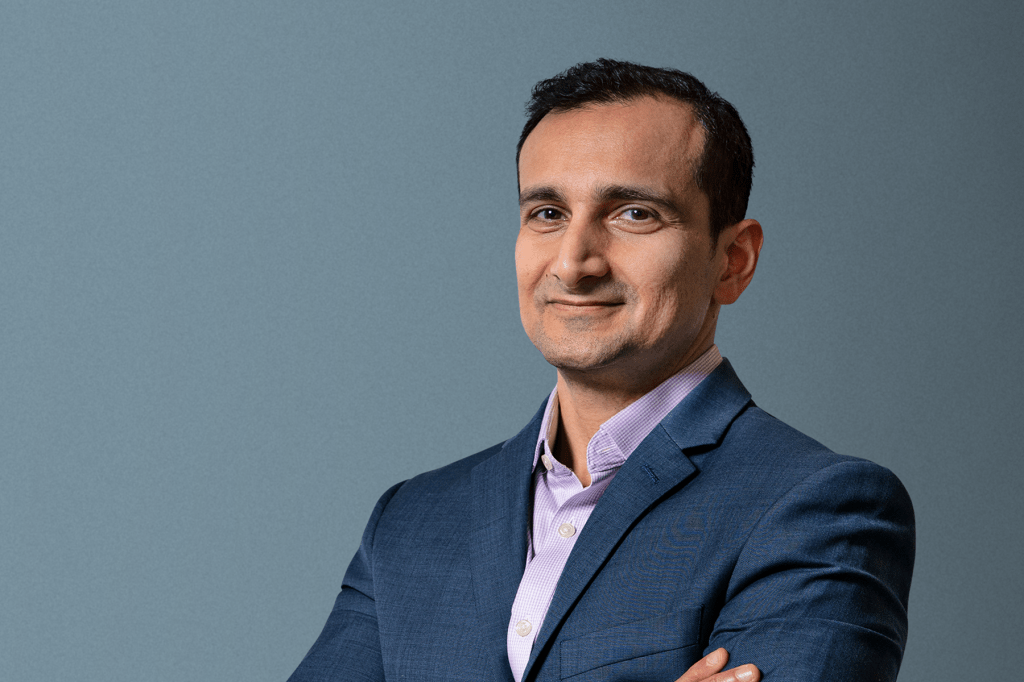By uniting digital, data, strategy, and research under chief knowledge officer Sandeep Davé, the commercial real estate service and investment firm is betting on integration as the key to AI-driven advantage.

The days of treating corporate and digital strategy as separate entities are over since their convergence has become central to data-driven transformation. Yet very few companies believe in it strongly enough to restructure themselves around that reality.
“Investments and behaviors follow org design,” says Sandeep Davé, CBRE’s chief knowledge officer. “In the era of AI, the world requires integration, not isolation.”
A new role for a new reality
For Davé, becoming chief knowledge officer represents more than a role change. It reflects a deliberate reframing of how CBRE approaches technology, strategy, and data.
The company, which serves clients in more than 100 countries and offers services ranging from capital markets and leasing advisory to investment management, project management and facilities management, has long been strategy-led. By elevating Davé from CDTO into a newly created role that unites corporate strategy, research, and data with the overall technology direction, CBRE is signaling that these functions are inseparable in shaping the company’s future.
Davé points to three forces behind the move.
The first is scale and complexity. With our scale — the clients, asset classes, services, and global reach — CBRE needed a way to harness and translate its vast data assets into knowledge and insights. “If we can see every property we touch, and convert that data into knowledge and insights, we create a formidable competitive moat,” he says.
The second is AI as a differentiator. “The thing that distinguishes what you can do with AI is data,” he says. “If AI delivers the transformative impact it promises, then your data foundation, governance, and strategic alignment will determine your rate of success.”
The third is organizational maturity. After years of scaling cutting-edge technology across the business, including the latest AI offerings, CBRE now has the platforms, infrastructure, and cultural readiness to take a bold next step. Functions that once operated in isolation are being reshaped.
Research offers a clear example of that reshaping. “We’re elevating our global research function by streamlining processes and improving outcomes,” Davé says. “Now, by applying AI and automation, we’re increasing efficiency while also significantly enhancing the quality of our outputs.”
Nothing in isolation
The unification of functions reinforces a central truth in broad technology and AI adoption that context is king. Without it, even the most advanced tools deliver limited results. When technology, research, and strategy move together, the impact can be transformative.
Evidence of that transformation is already visible at CBRE. In facilities management, predictive analytics now inform repair-versus-replace decisions, cut duplicate work orders, and optimize service delivery. And across the enterprise, more than 65,000 employees use Ellis AI, the firm’s gen AI platform, to access trusted data, generate insights, and automate routine tasks.
“Tools alone don’t bend the cost curve,” says Davé. “It’s important to understand the environment, intent, and nuances that shape intended outcomes. When we combine the richness of our data with the insight of our people and the discipline of strategy, AI stops being a showcase of use cases and becomes a driver of real market differentiation.”
Lessons for the C-suite
CBRE’s establishment of this position, particularly under Davé, signals a deliberate strategic move that says consolidating key functions under one remit is more purposeful and productive.
Conway’s Law is a useful reminder here whereby systems often mirror the communication patterns and structures of the organizations that build them. Fragmented companies and cultures yield fragmented technology solutions. For leaders serious about capturing the full value of AI, progress will demand more than governance frameworks or technology investments. It may require rethinking reporting lines, incentives, and collaboration models.
Convergence isn’t just an idea, it’s an operating model. And the future of AI-driven transformation will be shaped not only by the technology deployed, but how organizations choose to design themselves around it.










